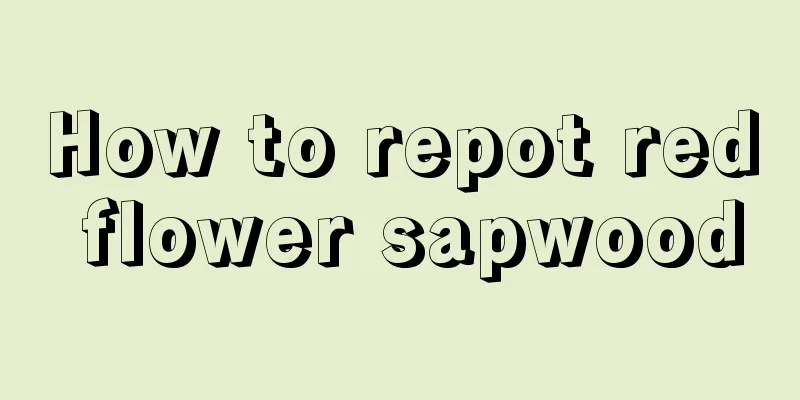Cultivation methods and precautions of blue-eyed chrysanthemum

|
If you like chrysanthemums, you might as well grow a blue-eyed daisy. It is beautiful and easy to grow. Its flowers are soft and elegant. Blue-eyed daisy, also known as African daisy, is native to South Africa and looks very similar to daisy. It is not cold-resistant, so except for the cold winter, it will bloom in spring, summer and autumn throughout the year, and the flowering period is more than 200 days. How to grow blue chrysanthemumBlue-eyed chrysanthemum can withstand low temperatures of -3 to 5 degrees, and is not afraid of the summer sun in the south. It has a strong root system and is free of diseases and pests. After buying it, change it to a larger pot, and then place it in the best sunny place, water it on time, and it will easily bloom out of the pot without pinching or topping. 1. Soil Blue-eyed chrysanthemum has a strong adaptability to the environment and can grow even in places with poor soil, high salt content or extreme water shortage. However, in order for it to grow better, it is usually necessary to prepare loose and fertile soil. If you prepare the potting soil yourself, you can mix loam and leaf mold, and add a certain amount of river sand to improve drainage capacity. 2. Lighting The growth of blue-eyed chrysanthemum cannot be separated from sufficient light. If the environment is too dark, the plant may grow too tall, which not only looks unsightly, but also affects flowering. It should be placed in a sunny place so that it can receive sufficient light. However, this plant is very afraid of heat and needs proper shade in summer to prevent it from being sunburned. 3. Watering Blue-eyed chrysanthemums must be watered enough to keep the soil moist. Once the plant lacks water, it will enter a dormant period, which may also cause the buds to fall off and affect its flowering. However, it should not be watered excessively. If the soil in the pot is too moist or there is water in it, it will also cause root rot. 4. Fertilization Before potting the blue-eyed chrysanthemum, sufficient base fertilizer should be applied to the soil. During its growth period, appropriate top dressing can be applied, or no fertilizer is required. However, before it blooms, some phosphorus and potassium fertilizers need to be added in advance, which can promote flowering. When applying fertilizer, you must pay attention to the concentration, as excessive fertilizer will cause fertilizer damage. Precautions for caring for blue chrysanthemumWhen caring for blue-eyed chrysanthemum, you should pay attention to the fact that after one year of growth, the nutrients in the soil in the flowerpot are basically consumed. At this time, you should replace it with new soil with sufficient nutrients. The side buds of blue-eyed chrysanthemum need to be cut off during the seedling stage to reduce nutrient consumption. When the buds are just beginning to form, you should choose to cut off the unnecessary buds to increase the amount of nutrients obtained by the remaining buds, so that the flowers that bloom will be larger and brighter. |
<<: The cultivation methods and precautions of hydroponics
Recommend
Throw these 9 kinds of flowers on the balcony, and they will sprout immediately and grow into a "waterfall" in 3 months!
Prunus truncatula Hanging Bamboo Scented Wisteria...
The best time to eat avocado
1. Best time The more appropriate time to eat is ...
The efficacy and function of sand pear
Medicinal value The reason why I put it first is ...
Apple tree growth environment and growing conditions
Apple Tree Growth Environment and Conditions Appl...
How often should I water the peace tree?
one. usually: 1. Generally speaking, you can add ...
Does coleus prefer shade or sun?
Does coleus prefer shade or sun? Coleus is easy t...
What to do if the leaves of Christmas cactus turn yellow
Yellowing Causes The reason why the leaves of Chr...
How long is the growth cycle of a peach tree?
Introduction to Peach Tree Growth Peach trees pre...
How to Plant Mangosteen Seeds
Mangosteen Seed Introduction Generally, the seeds...
Can pumpkin skin be eaten? How to eat it?
1. Can pumpkin skin be eaten? The tender pumpkin ...
Can beer be used to water camellia?
1. Is it suitable? The answer is yes. Moreover, a...
Can Milan be placed in the living room?
1. Feng Shui Effect 1. Seek profit and avoid disa...
What to do if the lucky bamboo leaves curl
1. Proper watering 1. Reasons When it is growing,...
How to Plant White Rose Seeds
White Rose Seeds Introduction The seeds of white ...
Forget-me-not flower language and meaning
1. Flower Language Its flower language is very be...









